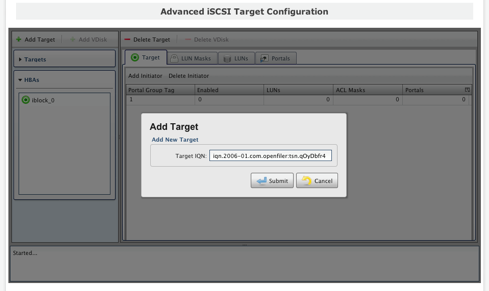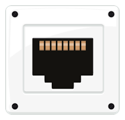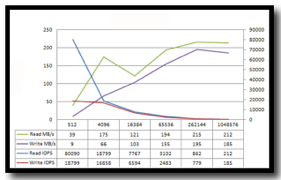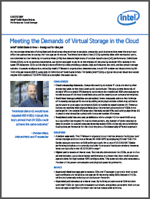Openfiler iSCSI SAN for Virtualization (SAN-4-V) is designed for production use in environments that demand sustained high I/O load capacity and strict standards compliance from backend storage, typical of virtualization and cloud deployments. Openfiler iSCSI SAN-4-V comprises of a robust performance-oriented standards-compliant kernel iSCSI target implementation coupled with a front-end web-management interface.
Deploying a feature-complete standards-compliant iSCSI storage area network could not be easier with integrated volume management and broad hardware support.
Performance
Openfiler iSCSI SAN-4-V is an affordable, performance-oriented solution suitable for virtualization and cloud application deployment. This Intel case study based on Openfiler iSCSI SAN-4-V demonstrates the significant cost-savings gained over proprietary storage solutions whilst simultaneously delivering equivalent or better performance of proprietary storage platforms.
Features

- Persistent reservations support - As an iSCSI target LUN can be accessed from multiple initiators concurrently, such as in a high-availability cluster or shared-storage flesystem, a means by which to prevent initiator I/O clashes has to be implemented. The basic iSCSI target implementation in Openfler supports SCSI RESERVE/RELEASE. This is used in environments where a dedicated lock is required on the I/O target – a LUN in this instance – from multiple initiators performing I/O concurrently. While most legacy applications can function using the RESERVE/RELEASE commands, some newer applications, notably Windows 2008 cluster, require SPC(SCSI Primary Command)-3 Persistent Reservation (PR) commands to function properly. Openfler iSCSI SAN-4-V will honor initiator PR commands where necessary.
- Error Recovery Level 2 (ERL2) support - One of the main benefits of iSCSI SAN architecture is the decoupling of physical storage from the consumers.
 This however exposes consumers to the increased possiblity of transmit/receive errors which have to be handled gracefully in order to prevent application I/O failure. The iSCSI standard defines error recovery classes which are implemented over three error recovery levels: ERL0, ERL1, and ERL2. ERL2 is a sophisticated ERL with the ability to recover from connection errors. Most iSCSI target implementations only support ERL0, which mandates recreation of an iSCSI session in the event of a network I/O error. Re-esablishing an iSCSI session results in performance degradation. ERL2 does not require session re-initialization and as such provides a higher performance solution for initiators - especially where multiple initiators are accessing a target portal simultaneously.
This however exposes consumers to the increased possiblity of transmit/receive errors which have to be handled gracefully in order to prevent application I/O failure. The iSCSI standard defines error recovery classes which are implemented over three error recovery levels: ERL0, ERL1, and ERL2. ERL2 is a sophisticated ERL with the ability to recover from connection errors. Most iSCSI target implementations only support ERL0, which mandates recreation of an iSCSI session in the event of a network I/O error. Re-esablishing an iSCSI session results in performance degradation. ERL2 does not require session re-initialization and as such provides a higher performance solution for initiators - especially where multiple initiators are accessing a target portal simultaneously. - Multipathing & Multiple connections per session - Nobody wants to be stuck with a single point of failure when running a business critical application. Flexibility afforded by iSCSI, of moving the storage away from the consumer for administrative ease, can cause a problem when your path to the storage fails. To mitigate such an occurrence, multipathing is one of the solutions. Essentially multiple physical channels to the storage appliance are implemented such that no single physical path failure will bring down consumer applications. When operations are running smoothly, these multiple physical paths can act in concert to improve I/O throughput and enhance application performance. Openfiler iSCSI SAN-4-V supports multiple connections per session - where iSCSI sessions are split across iSCSI portals; it also supports OS level multipathing where multiple sessions from a single initiator connect to multiple target portals.
- Enhanced performance - Openfiler iSCSI SAN-4-V provides a huge performance boost over the iSCSI target implementation in Openfiler community edition.
 It can perform at near wire-speed over 10gb and Infiniband connections. A benchmark of Openfiler iSCSI SAN-4-V using SSD and 10GbE delivers sustained 90-100K IOPS with 4K blocks at 90% reads and 10% writes.
It can perform at near wire-speed over 10gb and Infiniband connections. A benchmark of Openfiler iSCSI SAN-4-V using SSD and 10GbE delivers sustained 90-100K IOPS with 4K blocks at 90% reads and 10% writes.

